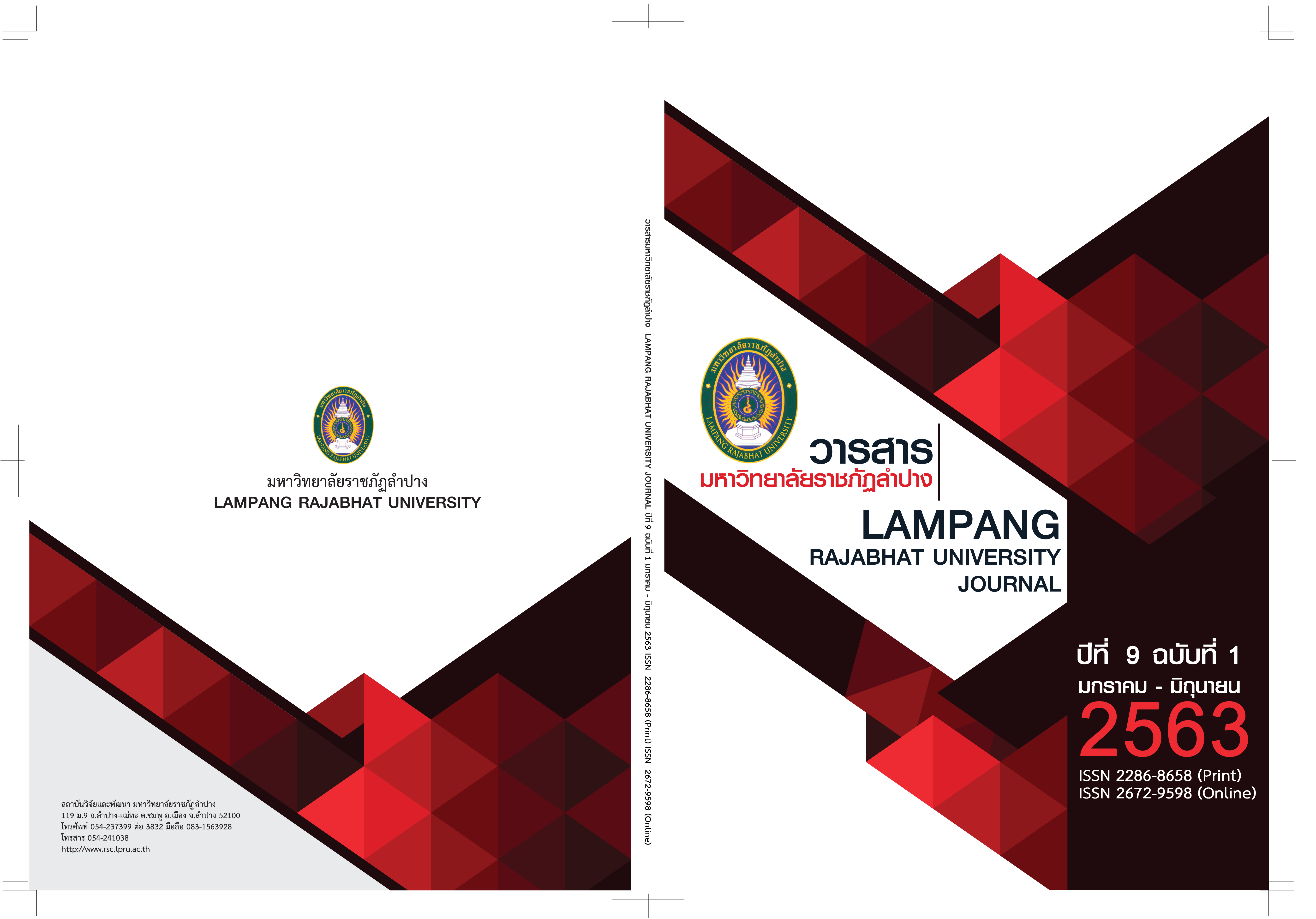การวิเคราะห์กลยุทธ์การสื่อสารระหว่างครูสอนทำอาหารชาวไทยกับนักท่องเที่ยวชาวต่างชาติ: กรณีศึกษาโรงเรียนสอนทำอาหารไทยสมาร์ทคุ๊กจังหวัดเชียงใหม่
คำสำคัญ:
communication, communication strategies, oral communication strategiesบทคัดย่อ
This study aimed to analyze and compare the communication strategies adopted by Thai cooking teachers and foreign tourists. For data collection, a focus group discussion and a video-recording to provide an insightful understanding of the communication strategies and practical use of those strategies will be both conducted with Thai cooking teacher teaching Thai food, and foreign tourists learning cooking courses in the Smart Cook Thai Cookery School in Chiang Mai, Northern Thailand. In data analysis, oral communication strategies conceptualized by Corder (1983), Dörnyei & Cohen (2002), and Nakatani (2005, 2006) can be divided into two major types: 1. Risk-taking strategies consist of 6 strategies and 2. Risk-avoidance strategies consist of 3 strategies. Findings revealed that the Thai cooking teacher’s fluency-oriented strategies were mostly used followed by his time-gaining strategies and his accuracy-oriented strategies meanwhile the foreign tourists’ help-seeking strategies were mostly used followed by their non-verbal strategies, and their fluency-oriented strategies. However, the results will help Thai cooking teacher and foreign tourists at cooking schools in Chiang Mai to have in-depth information on how they use their communication.
เอกสารอ้างอิง
Arpacı-Somuncu, D. (2016). Turkish EFL learners’ use of communication strategies and its predictors. (pp. 178-192). ELT Research Journal
Bumrungkit, O. (2015). Communicative Strategies Used by Secondary School Students: A Case study of Satit Udomseuksa School, Chon Buri, Burapha University, Thailand
Canale, M. and Swain, M. (1980). Theoretical Bases of Communicative Approaches to Second Language: Teaching and Testing? Applied Linguistics 1. oxford university press. England. oxford university. 1:1-47.
Corder, P. (1983). Strategies of Communication. In Strategies in Inter-language Communication, edited by Claus Færch and Gabriele Kasper. London. Longman.
Dörnyei, Z. & Cohen, A. D. (2002). Focus on the Language Learner: Motivation, Styles and Strategies, In an Introduction to Applied Linguistics, edited by Norbert Schmitt, London, Arnold. :170–190.
Dvořáková, B. (2012). Communicative Competence in Second Language Acquisition. Czech. Palackého University.
Euamornvanich, P. (2016). Intercultural Communication Problems and Adjustment between Foreign Instructors and Thai Students at Rajabhat Universities in Bangkok. (pp. 78–92). Bangkok. Dhonburi Rajabhat University Journal.
Hiranburana, K. (2013). Intercultural Communication: Globalization and Social Justice. Chulalongkorn University. Bangkok. Pasaa Paritat journal. :111-116
Huang, X. (2013). The effect of cross-cultural communication on adaption of Chinese Teacher in Bangkok, Dhurakij Pundit University.
Hymes, D. H. (1966). “Two types of linguistic relativity”. In Bright, W. Sociolinguistics. The Hague: Mouton. :114–158
Kitwikarn, N. (2014). Thai Food Image, Quality Perceived and Tendency to Revisit Thailand. Bangkok. National Institute of Development Administration. International Thai Tourism Journal. 10(1): 12-28
Ministry of Tourism and Sports, (2018). Tourism Receipts from International Tourist Arrivals by Expenditure Item 2017, [online]. Available: https:// www.mots.go.th/more_news.php? cid=411. Retrieved June 20, 2019
Nakatani, Y. (2006). Developing an oral communication strategy inventory. The Modern Language Journal. 90(2): 152–167
Nanthaboot, P. (2012). Using Communicative Activities to Develop English Speaking Ability of Matthayomsuksa Three Students. Bangkok, Srinakharinwirot University.
Nitisakulwut, P. and Soranastaporn, S. (2017). Language Learning Strategies of Students Participating in Asean Camp. Journal of Humanities and Social Sciences Thonburi University. 6(1): 12-29.
Posai, S. and Soranasthaporn, S. (2018). Communication Strategies of Thai Students Studying Chinese Major: Differences between English and Chinese. Manutsat Paritat : Journal of Humanities. 40(1): 94-103.
Rastegar, M. and Gohari. , S. S. M. (2016). Communication Strategies, Attitude, and Oral Output of EFL Learners: A Study of Relations. Kerman, Iran, University of Kerman.
Rungsimuntuchat, P. (2014). Communication for Promoting Eco-tourism of the Thai Elephant Conservation Center in Lampang, Thesis, Bangkok, Dhurakij Pundit University.
Sathapitanonda, P. (2002). Methodology of communication research. Bangkok. chulalongkorn university press.
Thanakong, K. and Adipattaranan, N. (2017). Using Communicative Language Teaching Activities to Enhance English Listening-Speaking Abilities and Grammatical Knowledge among Undergraduate Students. Chiang Mai. Chiang Mai University. Journal of Education Naresuan University. 19(4):51-64.
TripAdvisor LLC, (2017). Cooking Schools, [online]. https://th.tripadvisor.com/ Attractions-g293917-Activities-c36-t203-Chiang_Mai.html. Retrieved October 15, 2018
ดาวน์โหลด
เผยแพร่แล้ว
รูปแบบการอ้างอิง
ฉบับ
ประเภทบทความ
สัญญาอนุญาต
ลิขสิทธิ์ (c) 2020 วารสารมหาวิทยาลัยราชภัฏลำปาง

อนุญาตภายใต้เงื่อนไข Creative Commons Attribution-NonCommercial-NoDerivatives 4.0 International License.
บทความลิขสิทธิ์ของวารสารมหาวิทยาลัยราชภัฎลำปาง






